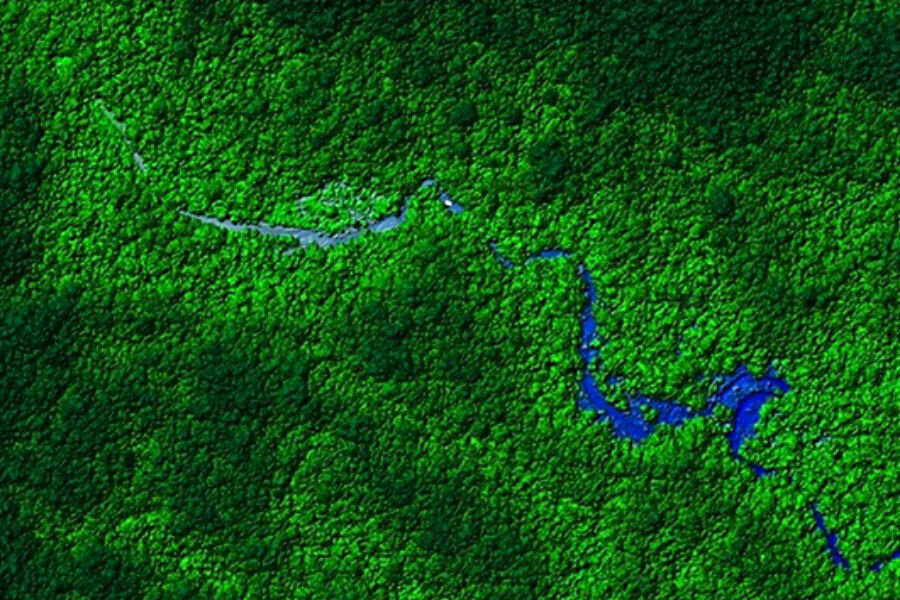How scientists are finding lost cities: Is this the 'City of the Monkey God'?
Loading...
The alleged discovery of the legendary "White City" or "City of the Monkey God" in Honduras, may be disputed by some archaeologists, but none will argue that new technologies are making this a platinum age of new findings.
“It seems that every two years somebody comes out saying they’ve found the White City, says Shanti Morell-Hart, an assistant professor at McMaster University in Hamilton, Ont.. “Many archeologists believe that The ‘White City,’ by its very nature, must never be found. It’s more of a legend that covers a region of many cities that were considered ‘Lost Cities,’ that depopulated due to the epidemics that swept through when the Europeans arrived, many of them large.”
Dr. Morell-Hart – who did her doctoral research in Honduras and will be returning to the region this summer to study a site a few hundred miles away from where this discovery was made – explains, “The discoveries are all wonderful and exciting until you find the next ‘White City,’” she says. “More exciting is a pattern that finally jumps out – like statues of jaguars to rulership and religious practices or something that’s strikingly different found in the region.”
Ultimately, more valuable than whether this is the long, lost "White City" or not, is what the artifacts found in Honduras will tell archeologists about the culture and people who once lived there.
Morell-Hart and other archeologists say that these are the heady days of discovery and re-discovery thanks to both changing political climates and a plethora of technological advancements that are helping bring more finds to light.
“I would have to say that we have probably only found about 40-percent of what’s out there to discover in South America,” says Ben Thomas, director of programs at the Archaeological Institute of America (AIA), Boston Mass., in a phone interview.
According to Dr. Thomas, two things are happening in archeology today: 1. There is still stuff to be discovered and 2. Looking at old discoveries and finding different things thanks to new technologies.
Thomas did his field work for his doctorate in Belize and Guatemala. He now specializes in Central American and Maya cultural discoveries.
“Finding a pre- or non-Maya culture is significant,” Thomas says of the “White City” announcement. “While we have so many advances that can help us to locate and map what might be there, someone still has to go in there and make the discovery as this team has.”
While stopping short of labeling this a new age of discovery, Thomas says,” We have entered a more sophisticated age of exploration.”
Thomas explains that the development and honing of remote mapping technologies such as satellite-borne sensors, infrared spectrum imaging, ground-penetrating radar, camera-equipped drones, and LIDAR (Light Detection and Ranging) have elevated archeology to a whole new level.
LIDAR was instrumental in this latest find. In in 2012, this team enlisted the help of the Center for Airborne Laser Mapping at the University of Houston, explains National Geographic.
A Cessna Skymaster, carrying a million-dollar lidar scanner, flew over the valley, probing the jungle canopy with laser light. lidar—"Light Detection and Ranging"—is able to map the ground even through dense rain forest, delineating any archaeological features that might be present.
When the images were processed, they revealed unnatural features stretching for more than a mile through the valley. When [Christopher Fisher, a Mesoamerican archaeologist from Colorado State University] analyzed the images, he found that the terrain along the river had been almost entirely reshaped by human hands.
LIDAR, explains the US Geological Survey (USGS) website, “is being used for a wide range of applications including high-resolution topographic mapping and 3-dimensional surface modeling as well as infrastructure and biomass studies.” The technology "uses a laser scanner with up to 400,000 pulses of light per second. The laser transmits pulses and records the time delay between a light pulse transmission and reception to calculate elevation values."
Ultimately, however "it takes scientists on the ground to actually locate, uncover and assess the find," says Thomas.
What this has translated into for archeologists, says Thomas, is the ability to not only make new discoveries, such as “The White City,” but to re-visit previously explored sites and to monitor sites that have become inaccessible due to political issues.
“For example, we can’t get into Syria to monitor sites or look for previously undiscovered pyramids in places like Egypt right now but with the range of new aerial and satellite mapping we can still have our eyes on the sites for signs of decay or disturbance, Thomas says.”
In 2013, LIDAR helped produce a detailed map of a vast cityscape, including highways and previously undiscovered temples, hidden beneath dense vegetation at Angkor Wat, the Cambodian temple complex. It was dubbed the lost city of Mahendraparvata.
Another example cited by Thomas is the dig at Caracol in Belize, where he says, “These archeologists in Caracol had already done a fantastic job of thoroughly mapping. Few sites in the world have been this thoroughly documented and still, they made more advances and discoveries.”
“With LIDAR this site which scientists have been all over since the 1980s, all of a sudden they saw things they hadn’t seen before,” Thomas says. “That’s the fun part of archeology. It’s never over.”








